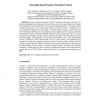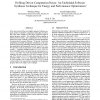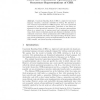341 search results - page 24 / 69 » Redundancy elimination revisited |
SIGMOD
2002
ACM
14 years 9 months ago
2002
ACM
Dwarf is a highly compressed structure for computing, storing, and querying data cubes. Dwarf identifies prefix and suffix structural redundancies and factors them out by coalesci...
MLDM
2007
Springer
14 years 2 months ago
2007
Springer
Recursive Feature Elimination (RFE) combined with feature ranking is an effective technique for eliminating irrelevant features when the feature dimension is large, but it is diffi...
VLSID
2004
IEEE
14 years 9 months ago
2004
IEEE
It has been observed that even highly optimized software programs perform "redundant" computations during their execution, due to the nature (statistics) of the values a...
ITCC
2005
IEEE
14 years 2 months ago
2005
IEEE
Abstract: Evidence of some attacks can be manifested by abnormal sequences of system calls of programs. Most approaches that have been developed so far mainly concentrate on some p...
ICLP
2005
Springer
14 years 2 months ago
2005
Springer
Constraint Handling Rules (CHR) is a high-level rule-based language extension, commonly embedded in Prolog. We introduce a new occurrence representation of CHR programs, and a new ...



